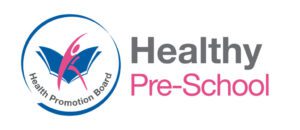Little Footprints Preschool Asia
Little Footprints Preschool Asia | |||
|---|---|---|---|
| Child Care Centre Address: | 546A, SEGAR ROAD, #01 - 67, SINGAPORE 671546 (Map shown below) | ||
| Contact Number: | 68171395 | ||
| Teaching Method1: | Theme-based approach | ||
| Teacher to Children Ratio2: | ECDA stipulated teacher-child ratio | ||
| Programme Offered: | Infant Care (2 months old to 17 months old) Playgroup (18 months old to 2 years old) Nursery 1 (3 years old) Nursery 2 (4 years old) Kindergarten 1 (5 years old) Kindergarten 2 (6 years old) | ||
| Mother Tongue: | Chinese | ||
| Anchor Operator or Partner Operator: |  Partner Operator Partner Operator | ||
| Healthy Pre-School Accreditation: |  Healthy Pre-school Healthy Pre-school | ||
| SPARK Certification: |  SPARK-Certified SPARK-Certified | ||
| Review of Preschool: | Relevant review is shown below after the map.You can join Child Care Chat Group in Bukit Panjang to ask review of this centre: or join Facebook group Childcare in Singapore to ask for reviews. | ||
| No Pork No Lard with No Beef(without Certification from MUIS but from Halal Sources) | |||
| Food Preparation: | Food is prepared on-site. | ||
| Transportation is not provided. | |||
| Operating Hours: | Monday - Friday : Full Day Hrs - 0700 to 1900hrs | ||
| Classroom3: | Air-conditioned | ||
| Communication Channel: | Little Lives App | ||
 Childcare /Infant Care Service Types and Fees of Little Footprints Preschool Asia Childcare /Infant Care Service Types and Fees of Little Footprints Preschool Asia | |
|---|---|
| School Service Type | Monthly School Fee Before Subsidy |
| Full Day Child Care* | 680 |
| Half Day Child Care | 540 |
| Full Day Infant Care | 1,231 |
| Half Day Infant Care | 920 |
| *Only fee for playgroup programme is shown. For nursery and kindergarten programmes, the monthly school fees are usually the same or lower. Fees may vary from time to time. | |
| Preschools | Monthly School Fee |
| CITIKIDS EDVENTURE | 1,000 |
| NEW LIFE COMMUNITY SERVICES | 1,038 |
| REDPONY CENTRE CASHEW | 1,050 |
| Little Olive Tree | 1,070 |
| AMAZING STAR MONTESSORI HOUSE (GREENRIDGE) | 1,100 |
| HEARTYLAND PRESCHOOL | 1,100 |
| York Infant and Early Years | 1,180 |
| SMILING STAR SINGAPORE | 1,300 |
| CAMBRIDGE CDC @ DAIRY FARM | 1,500 |
| MONTESSORI @ GRACELAND | 1,900 |
| MINDCHAMPS PRESCHOOL @JUNCTION 10 | 2,415 |
| MINDCHAMPS CHINESE PRESCHOOL @ DAIRY FARM | 2,415 |
| Alpha Green Preschool | 2,650 |
| PCF SPARKLETOTS PRESCHOOL @ BUKIT PANJANG BLK 254 (EY) | 640 |
| MY FIRST SKOOL | 640 |
| PCF SPARKLETOTS PRESCHOOL @ CASHEW (CC) | 640 |
| E-BRIDGE PRE-SCHOOL | 640 |
| MY FIRST SKOOL | 640 |
| PCF Sparkletots Preschool @ Zhenghua Blk 550B (EY) | 640 |
| MY FIRST SKOOL | 640 |
| PCF Sparkletots Preschool @ Cashew Blk 545 (EY) | 640 |
| MY FIRST SKOOL | 640 |
| MY FIRST SKOOL | 640 |
| PCF Sparkletots Preschool @ Bukit Panjang Blk 111 (EY) | 640 |
| PCF Sparkletots Preschool @ Bukit Panjang Blk 226 (EY) | 640 |
| PCF Sparkletots Preschool @ Zhenghua Blk 645 (EY) | 640 |
| SKOOL4KIDZ CENTRE | 640 |
| MY FIRST SKOOL | 640 |
| PCF SPARKLETOTS PRESCHOOL @ CASHEW BLK 183 (CC) | 640 |
| PCF SPARKLETOTS PRESCHOOL @ ZHENGHUA BLK 632A (CC) | 640 |
| PCF SPARKLETOTS PRESCHOOL @ BUKIT PANJANG BLK 412 (CC) | 640 |
| MY FIRST SKOOL | 640 |
| MY WORLD PRESCHOOL | 640 |
| ACE@WORK CHILDCARE | 680 |
| STAR LEARNERS @ BUKIT PANJANG | 680 |
| STAR LEARNERS @ UPPER BUKIT TIMAH | 680 |
| CARPE DIEM EDUCARE | 680 |
| Little Footprints Preschool Asia | 680 |
| CARPE DIEM YOUNG JOY | 680 |
| YMCA CHILD DEVELOPMENT CENTRE | 680 |
| Little Shepherds' Schoolhouse@St Joseph's Church | 680 |
| Little Seeds Preschool | 680 |
| Little Footprints Preschool Asia | 680 |
| SMALL WONDER PRESCHOOL BUKIT PANJANG | 680 |
| ESHKOL VALLEY @ BUKIT PANJANG | 850 |
| ARTEMIS PRESKOOL @ BUKIT PANJANG | 851 |
| NEW LIFE COMMUNITY SERVICES | 992 |
Basic Subsidy For Child Care
| Service Type | Monthly subsidy for working mother or single fathers | Subsidy for Non-working mother/single father |
| Full-day child care | $300 | $150 |
Table: Child Care Subsidy
Additional Subsidy For Child Care
It should be noted that there is minimum co-payment for each income group.
If the household monthly income is less than $12,000 or gross monthly per capita income is less than $3,000 and mothers/single fathers are working, there is an additional subsidy given by the government. Please refer to the table below for details.
| Gross monthly household income | Gross monthly per capita income | Basic Subsidy | Maximum Additional Subsidy |
| $3,000 and below | $750 and below | $300 | $467 |
| $3,001 - $4,500 | $751 - $1,125 | $440 | |
| $4,501 - $6,000 | $1,126 - $1,500 | $340 | |
| $6,001 - $7,500 | $1,501 - $1,875 | $260 | |
| $7,501 - $9,000 | $1,876 - $2,250 | $190 | |
| $9,001 - $10,500 | $1,876 - $2,250 | $130 | |
| $10,501 - $12,000 | $2,626 - $3,000 | $80 |
Table: Additional Child Care Subsidy For Full Day Child Care
 Incidental Charges of Little Footprints Preschool Asia Incidental Charges of Little Footprints Preschool Asia | ||||
|---|---|---|---|---|
| Item | Type | |||
| 1 | Deposit | |||
| 2 | Registration Fee | |||
| 3 | Uniform | |||
| 4 | Insurance | |||
Review of Little Footprints Preschool Asia
Be the first to write a review of this child care center.
| Login to write a review | |
| Forgot Password? | Register |
Join Parenting Chat Group in Your Area For Review
1. Teaching method at child care centre
In Singapore, most of the preschools adopts one of the following teaching methods:
- Play-based learning
- Theme-based approach
- Montessori method
- Reggio Emilia approach
- Inquiry-Based Learning
- Holistic approach
Play-Based Learning
- Focus: Learning through play.
- Method: Engages children in self-directed, open-ended play to develop cognitive, social, and emotional skills.
- Environment: Flexible and child-centered, allowing children to explore and make choices.
- Outcome: Builds creativity, problem-solving, and social skills through hands-on experiences.
Theme-Based Approach
- Focus: Learning through specific themes or topics (e.g., "seasons," "community helpers").
- Method: Lessons and activities are organized around a central theme, integrating multiple subjects to explore a topic from different perspectives.
- Environment: Structured around the theme, fostering connections between different areas of knowledge.
- Outcome: Helps children understand how concepts are interconnected and deepens knowledge about a particular topic.
Montessori Method
- Focus: Independence and self-motivated growth.
- Method: Uses specially designed materials and a prepared environment for self-directed learning.
- Environment: Structured yet flexible, allowing children to choose activities and work at their own pace.
- Outcome: Develops independence, concentration, and respect for others; children learn through hands-on discovery.
Reggio Emilia Approach
- Focus: Child-led exploration and collaboration.
- Method: Emphasizes project-based, collaborative learning with a focus on the child’s interests.
- Environment: Rich in materials and resources, with a strong emphasis on aesthetics, collaboration, and documenting the learning process.
- Outcome: Encourages curiosity, collaboration, and a love of learning through projects that engage the child’s interests.
Inquiry-Based Learning
- Focus: Developing curiosity and questioning.
- Method: Starts with a question or problem, encouraging children to investigate, research, and find answers independently.
- Environment: Open-ended, with teachers acting as facilitators, guiding children in their exploration.
- Outcome: Fosters critical thinking, curiosity, and independent research skills.
Holistic Approach
- Focus: Whole-child development (cognitive, emotional, social, and physical)
- Method: Combines various teaching strategies to address multiple areas of development, not solely academics.
- Environment: Supportive and nurturing, fostering each child’s unique abilities and needs.
- Outcome: Aims to develop well-rounded, emotionally intelligent individuals, focusing on life skills alongside academic knowledge.
Each approach brings a unique focus and method to early childhood education, tailored to different aspects of a child’s growth and learning style.
2. Teacher to child ratio
As stipulated by ECDA, the minimum qualified staff-child ratios during programme hours are as follows:
| Class level (Age of Children) | Staff to Children Ratio | Staff to Children Ratio (with an additional Assistant Educarer/Teacher) |
| Infant (18 months and below) | 1:5 | Not Applicable |
| Playgroup (Above 18 – to below 3 years old) | 1:8 | 1 + 1 : 12 |
| Pre-Nursery (Children who turn 3 years old during the year enrolled) | 1:12 | 1 + 1 : 18 |
| Nursery (Children who turn 4 years old during the year enrolled) | 1:15 | 1 + 1 : 20 |
| Kindergarten 1 (Children who turn 5 years old during the year enrolled) | 1:20 | 1 + 1 : 25 |
| Kindergarten 2 (Children who turn 6 years old during the year enrolled) | 1:25 | 1 + 1 : 30 |
Table 4: Stipulated Staff Child Ratio
3. Air-conditioned classroom
(a) If the weather allows, many air-conditioned centers will refrain from using their air conditioners.
(b) Many non-air-conditioned centers are equipped with portable air conditioners that can be used under specific weather conditions.
Pros and cons of having air-conditioned classroom in child care centres in Singapore.
| Pros | Cons |
| Air-conditioning provides a comfortable environment for students, reducing discomfort caused by heat, especially during afternoon classes. | Prolonged exposure to air-conditioning can cause dry skin, respiratory issues, and aggravate symptoms for those with asthma or other respiratory conditions. The lack of ventilation can also lead to poor air quality over time. |
| Cooler temperatures can enhance focus, as students aren’t distracted by the heat | Students may become overly accustomed to an air-conditioned environment, potentially making them less adaptable to outdoor activities or classrooms without cooling. |
| A cooler environment helps students feel less tired, maintaining energy levels and reducing drowsiness, especially in longer classes. | Air-conditioning significantly increases electricity usage, adding financial pressure on schools for maintenance and energy costs. The cost will ultimately be borne by the parents. |
| Protection from External Noise | |
| Air-conditioning can reduce the impact of allergies by filtering out dust and pollen |
Table 5: Pros and Cons of Having Air-Conditioned Classroom
